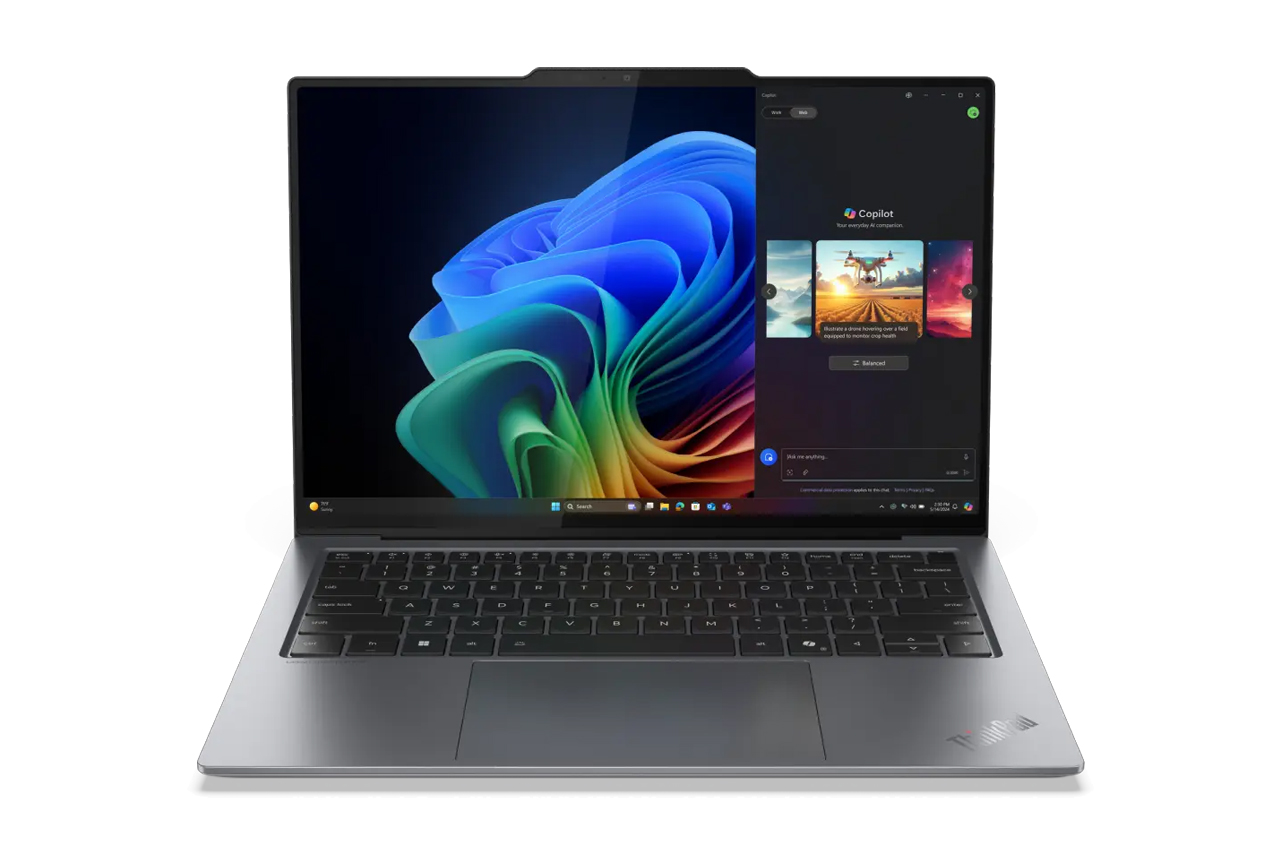We put the Lenovo Thinkpad X9 Aura through our rigorous DXOMARK Laptop test suite to measure its performance in sound, camera and display. In this review, we will break down how it fared in a variety of tests and several common use cases.
Overview
Scoring
Use-case and feature subscores included in the calculations of the global score

Lenovo ThinkPad X9 Aura
Pros
- High level of detail preservation by the camera
- Target exposure from the camera is accurate
- Focus range is adapted to video conference use case
- Camera captures pleasant colors with a fairly neutral white balance
- OLED display with excellent contrast handling
- Highly effective anti-reflective coating resulting in an improved visibility in bright environments
- Wide color gamut ensuring rich and vivid color reproduction
Cons
- Camera’s ability to preserve highlights in bright areas is limited
- Camera artifacts such as aliasing, anamorphosis and hue shifts are sometimes visible
- Slight image noise can be visible in the video feed, particularly on moving parts
- Maximum brightness in still images remains too low
- No color adjustment of the display based on contents
Test summary
About DXOMARK Laptop tests: For scoring and analysis in our laptop reviews, DXOMARK engineers perform a variety of objective tests and undertake more than 20 hours of perceptual evaluations under controlled lab conditions and real-life scenarios. (For more details about the Laptop protocol, click here.)
The following section gathers key elements of our exhaustive tests and analyses performed in DXOMARK laboratories. Detailed performance evaluations under the form of reports are available upon request. Do not hesitate to contact us.
Camera
Lenovo ThinkPad X9 Aura
136
DXOMARK evaluates the image quality of the built in camera during video calls, whether with a single person or with multiple people, in a variety of lighting conditions. Our camera evaluation particularly assesses the ability of the built-in camera to clearly render human faces during video calls. Other intrinsic camera quality aspects are also evaluated, like color reproduction, texture and noise, as well as artefacts.
In our camera evaluation, the Lenovo ThinkPad X9 Aura delivered an excellent performance, earning the top spot for Windows laptop camera quality in our rankings. It represents a significant improvement over the previous generation, the ThinkPad X1 Carbon Gen 12.
The overall user experience is excellent, thanks to accurate target exposure, a high level of facial detail, and an extended depth of field that ensures sharp focus across various conditions. Colors appear vivid, with a neutral white balance that helps faithfully reproduce a wide range of skin tones.
In more challenging scenarios—such as strong backlighting or direct light on the subject’s face—our testers noted a reduction in dynamic range, particularly in highlights. While noise levels are generally well-controlled, slight noise may occasionally appear during subject movement. Some artifacts, including aliasing, hue shifts, and anamorphosis (notably when subjects are near the edges of the frame), may occasionally affect the image quality.
The following chart presents the camera subscores for the video call use case:
Display
Lenovo ThinkPad X9 Aura
156
Through objective testing, DXOMARK evaluates the display performance by looking at 3 main aspects: Readability, HDR & SDR performances. While evaluating readability, our engineers will particularly focus on screen brightness, contrast, and reflectance, assessing the ease and comfort of viewing displayed images indoors. We also evaluate HDR & SDR performance while looking at video contents, verifying that the display rendering respects the original artistic intent of the filmmaker
The Lenovo Aura display offers strong overall performance, particularly when looking at its performance with HDR contents.
Colors in HDR are vivid and generally accurate, thanks to a wide gamut. Our testers observed some challenges with violet tones, which are generally difficult for most screens to reproduce, but the device offers a good color fidelity overall.
In SDR, the display adjusts its color range slightly to better match the P3 color space, ignoring sRGB pictures metadata. Therefore, color accuracy is less consistent: reds, oranges and greens tend to be a bit oversaturated, we observe a slight desaturation in blues and a continued difficulty in rendering violets accurately.
A minor shift in white point color is also noticeable between minimum and maximum brightness levels.
Brightness performance is solid. The screen can go as low as 4 nits, making it comfortable for use in dark environments, and reaches around 470 nits at peak brightness, good for most indoor and some outdoor use. Brightness is also very uniform across the screen, which helps with consistent image quality. The display has a glossy finish but includes an effective anti-reflective coating that keeps screen reflections low (around 2%). Combined with its good brightness, this makes it usable in bright rooms or shaded outdoor settings, though it might still struggle under direct sunlight.
When it comes to video, the display performs especially well. HDR content can reach about 850 nits of brightness, which is excellent, particularly for a Windows laptop, where this kind of HDR brightness boost is still uncommon. The screen is also well-calibrated for SDR video, with an accurate gamma curve that preserves contrast and detail. HDR tone mapping (how the screen displays HDR levels ranging from very dark to bright areas) is handled well at medium brightness, but some loss of detail in very bright highlights can occur at maximum brightness.
Overall, the Lenovo Aura display provides accurate rendering, especially for HDR videos where it is the best-performing Microsoft-based device. Users will find it a convenient device in a wide range of lighting conditions thanks to its well-thought-out build.
The following chart presents the display subscores:
cd/m²
cd/m²
cd/m²
cd/m²
cd/m²
cd/m²
cd/m²
cd/m²
cd/m²
 Distribution of brightness (min)
Distribution of brightness (min)
cd/m²
cd/m²
cd/m²
cd/m²
cd/m²
cd/m²
cd/m²
cd/m²
cd/m²
 Distribution of brightness (max)
Distribution of brightness (max)




